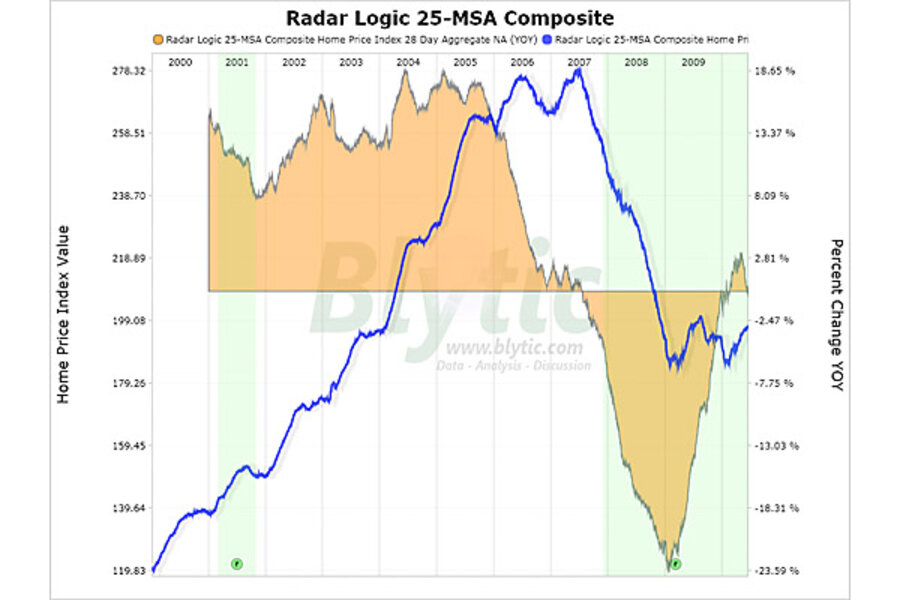Home price index shows declines
Loading...
As I have noted in the past, since the home price index data provided by Radar Logic is more timely, unadjusted and un-smoothed it is particularly useful for gaining some deeper visibility over our housing markets especially in light of the distortions created by the massive government tax gimmick and other malfeasance.
To contrast, recognize that because the S&P/Case-Shiller (CSI) data is a two month lagged and a three month moving average, the index data will reflect price movement resulting from the government's housing tax scam until at least the September release (July data).
Further, as BostonBubble points out, since Congress moved to extend the closing deadline for the credit until September, the CSI data may not be free of the distortion until the February 2011 release!
The Radar logic data, on the other hand, while lagged by 60 days is reported daily and, more importantly, is NOT SMOOTHED or adjusted so you can expect to see the underlying trends more precisely and substantially sooner than with the CSI.
That being said, I want to highlight the following video bit from Bloomberg (hat tip TMTGSM who originally posted this yesterday) whereby Michael Feder, CEO of Radar Logic, gives what I believe to be possibly the most important piece of macro guidance I have seen this year indicating that real estate activity post-tax gimmick is the "lowest activity in years through the peak season" and that "we may see the bottom fall out".
It's important to note that Michael has a fair amount of foresight given that his firm likely has the transaction data well in advance of the release of each daily data point.
Also, downbeat sentiment coming out of Radar Logic is a fairly significant shift in outlook likely indicating that future data will be indicating some pretty weak conditions.
As for the latest trends, it’s important to note that the 25-MSA Composite has begun to show some of the first year-over-year declines seen since February indicating that as we move through the majority of the "stimulated" transactions, the price trend is weakening.
The latest data shows that as of the middle of June, prices are 0.15% below the level seen in June 2009.
Add/view comments on this post.
------------------------------
The Christian Science Monitor has assembled a diverse group of the best economy-related bloggers out there. Our guest bloggers are not employed or directed by the Monitor and the views expressed are the bloggers' own, as is responsibility for the content of their blogs. To contact us about a blogger, click here. To add or view a comment on a guest blog, please go to the blogger's own site by clicking on the link above.





